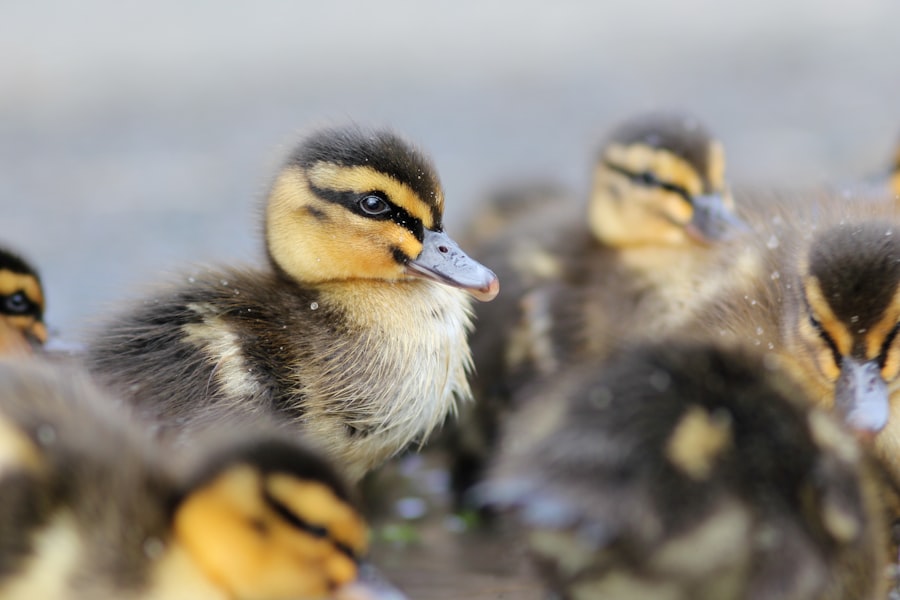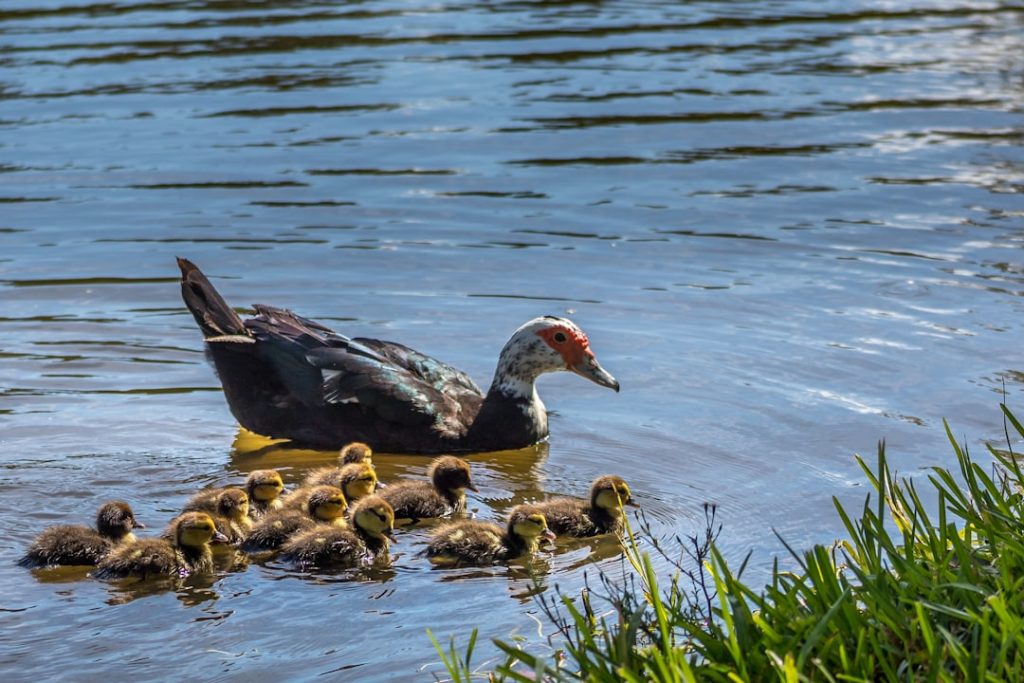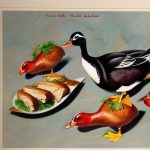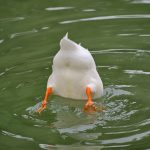Duck crossbreeds, also known as hybrid ducks, are the result of breeding two different duck breeds together. This can result in a wide variety of characteristics, including different colors, sizes, and temperaments. Crossbreeding ducks can also lead to improved disease resistance and overall hardiness. Duck crossbreeds are becoming increasingly popular among farmers and backyard duck enthusiasts due to their unique and diverse traits.
Crossbreeding ducks can also lead to improved egg production and meat quality. By combining the strengths of different duck breeds, farmers can create ducks that are more efficient at converting feed into eggs or meat. Additionally, crossbreeding can result in ducks that are better suited to specific climates or environments, making them more adaptable and resilient. Understanding the different duck crossbreeds and their potential benefits is essential for anyone interested in raising ducks.
Table of Contents
Key Takeaways
- Duck cross breeds are the result of breeding different duck species together, resulting in unique characteristics and traits.
- Some of the most popular duck cross breeds include the Khaki Campbell, the Buff, and the Welsh Harlequin.
- Identifying different duck cross breeds can be done by observing their physical characteristics, such as size, color, and feather patterns.
- When breeding duck cross breeds, it’s important to consider factors such as genetics, health, and the specific traits you want to achieve.
- Caring for duck cross breeds may require special considerations, such as providing adequate space, proper nutrition, and protection from predators.
The Most Popular Duck Cross Breeds
One of the most popular duck crossbreeds is the Khaki Campbell, which is a cross between the Mallard, Rouen, and Runner duck breeds. Known for their excellent egg-laying abilities, Khaki Campbells are a favorite among duck farmers and homesteaders. Another popular crossbreed is the Buff Orpington, which is a combination of the Buff and Orpington duck breeds. These ducks are known for their friendly and docile nature, making them a great choice for families and beginners.
The Pekin duck is another popular crossbreed, known for its large size and fast growth rate. Pekin ducks are often crossed with other breeds to improve meat production and feed conversion. Other popular duck crossbreeds include the Welsh Harlequin, Cayuga, and Swedish Blue. Each of these crossbreeds offers unique characteristics and traits that make them well-suited for different purposes, whether it’s egg production, meat quality, or adaptability to specific environments.
How to Identify Different Duck Cross Breeds
Identifying different duck crossbreeds can be challenging, especially since they can exhibit a wide range of physical characteristics. However, there are some key traits to look for when trying to identify a specific duck crossbreed. For example, the Khaki Campbell crossbreed typically has a khaki-colored plumage with a slender body and upright stance. On the other hand, the Buff Orpington crossbreed has a buff-colored plumage with a round body and friendly demeanor.
When trying to identify different duck crossbreeds, it’s important to consider not only their physical appearance but also their behavior and temperament. Some crossbreeds may inherit specific traits from their parent breeds, such as foraging abilities, broodiness, or flightiness. By observing these traits, it’s possible to make an educated guess about the crossbreed of a particular duck. Additionally, consulting with experienced duck breeders or joining online forums and communities can provide valuable insights into identifying different duck crossbreeds.
Breeding Duck Cross Breeds: Tips and Considerations
Breeding duck crossbreeds requires careful planning and consideration of the desired traits and characteristics. When breeding ducks, it’s important to select parent breeds that complement each other in terms of egg production, meat quality, temperament, and adaptability. Additionally, it’s essential to consider the potential challenges of breeding crossbreeds, such as genetic diversity and maintaining breed standards.
One important consideration when breeding duck crossbreeds is to avoid inbreeding, which can lead to genetic defects and health issues. By introducing new bloodlines and carefully selecting parent ducks with diverse genetic backgrounds, breeders can ensure the health and vitality of the offspring. It’s also important to monitor the offspring closely for any signs of genetic abnormalities or health problems, and to seek veterinary care if necessary.
Caring for Duck Cross Breeds: Special Considerations
Caring for duck crossbreeds requires special considerations due to their diverse traits and characteristics. For example, some crossbreeds may have specific dietary requirements or housing needs based on their size, activity level, or climate adaptability. It’s important to provide adequate space for crossbred ducks to roam and forage, as well as access to clean water for swimming and grooming.
Additionally, caring for duck crossbreeds may require extra attention to their health and well-being, especially if they inherit specific genetic traits from their parent breeds. Regular veterinary check-ups and preventive care can help ensure the long-term health of crossbred ducks. It’s also important to provide enrichment activities and socialization opportunities for crossbred ducks to prevent boredom and behavioral issues.
The Benefits and Drawbacks of Duck Cross Breeds

There are several benefits to raising duck crossbreeds, including improved disease resistance, adaptability to different environments, and enhanced egg production or meat quality. Crossbreeding ducks can also result in unique and diverse traits that make them well-suited for specific purposes, whether it’s foraging abilities, broodiness, or friendly temperament. Additionally, raising duck crossbreeds can contribute to genetic diversity within duck populations, which is essential for maintaining healthy and resilient breeds.
However, there are also drawbacks to consider when raising duck crossbreeds. For example, it can be challenging to predict the exact traits and characteristics of crossbred offspring, making it difficult to achieve specific breeding goals. Additionally, maintaining breed standards and preserving the unique qualities of individual duck breeds can be more challenging when working with crossbreeds. It’s also important to consider the potential health issues associated with crossbreeding, such as genetic abnormalities or inherited diseases.
The Future of Duck Cross Breeds
The future of duck crossbreeds looks promising as more farmers and homesteaders recognize the potential benefits of raising diverse and adaptable ducks. With careful breeding practices and consideration of the unique traits of different duck breeds, it’s possible to create crossbreeds that excel in egg production, meat quality, and overall hardiness. Additionally, preserving genetic diversity within duck populations through crossbreeding can contribute to the long-term health and sustainability of duck breeds.
As interest in sustainable agriculture and small-scale farming continues to grow, duck crossbreeds offer a valuable opportunity to create resilient and versatile ducks that can thrive in various environments. By understanding the different traits and characteristics of duck crossbreeds, as well as the considerations for breeding and caring for them, farmers and enthusiasts can contribute to the continued success of these unique and diverse ducks. With proper management and attention to breed standards, the future of duck crossbreeds is bright and full of potential for innovation and improvement in duck farming practices.
If you’re interested in learning more about duck crossbreeds, you might also want to check out Poultry Wizard’s article on converting a shed to a chicken coop. Creating a suitable living space for your ducks is just as important as understanding their breeding and genetics. You can find the article here.
FAQs
What are duck cross breeds?
Duck cross breeds are the result of breeding two different duck species together, creating a hybrid offspring with characteristics of both parent breeds.
What are some common duck cross breeds?
Some common duck cross breeds include the Mulard (Muscovy and Pekin), the Khaki Campbell (Rouen and Runner), and the Buff Orpington (Buff and Aylesbury).
What are the benefits of duck cross breeding?
Duck cross breeding can result in offspring with desirable traits such as better egg production, meat quality, or disease resistance. It can also lead to unique and attractive plumage patterns.
Are duck cross breeds recognized by breed standards?
In some cases, duck cross breeds may be recognized by breed standards, especially if they have been intentionally bred for specific purposes such as commercial production or exhibition.
Can duck cross breeds reproduce?
In most cases, duck cross breeds are fertile and can reproduce with other ducks, including those of their parent breeds or other cross breeds.
Meet Walter, the feathered-friend fanatic of Florida! Nestled in the sunshine state, Walter struts through life with his feathered companions, clucking his way to happiness. With a coop that’s fancier than a five-star hotel, he’s the Don Juan of the chicken world. When he’s not teaching his hens to do the cha-cha, you’ll find him in a heated debate with his prized rooster, Sir Clucks-a-Lot. Walter’s poultry passion is no yolk; he’s the sunny-side-up guy you never knew you needed in your flock of friends!







